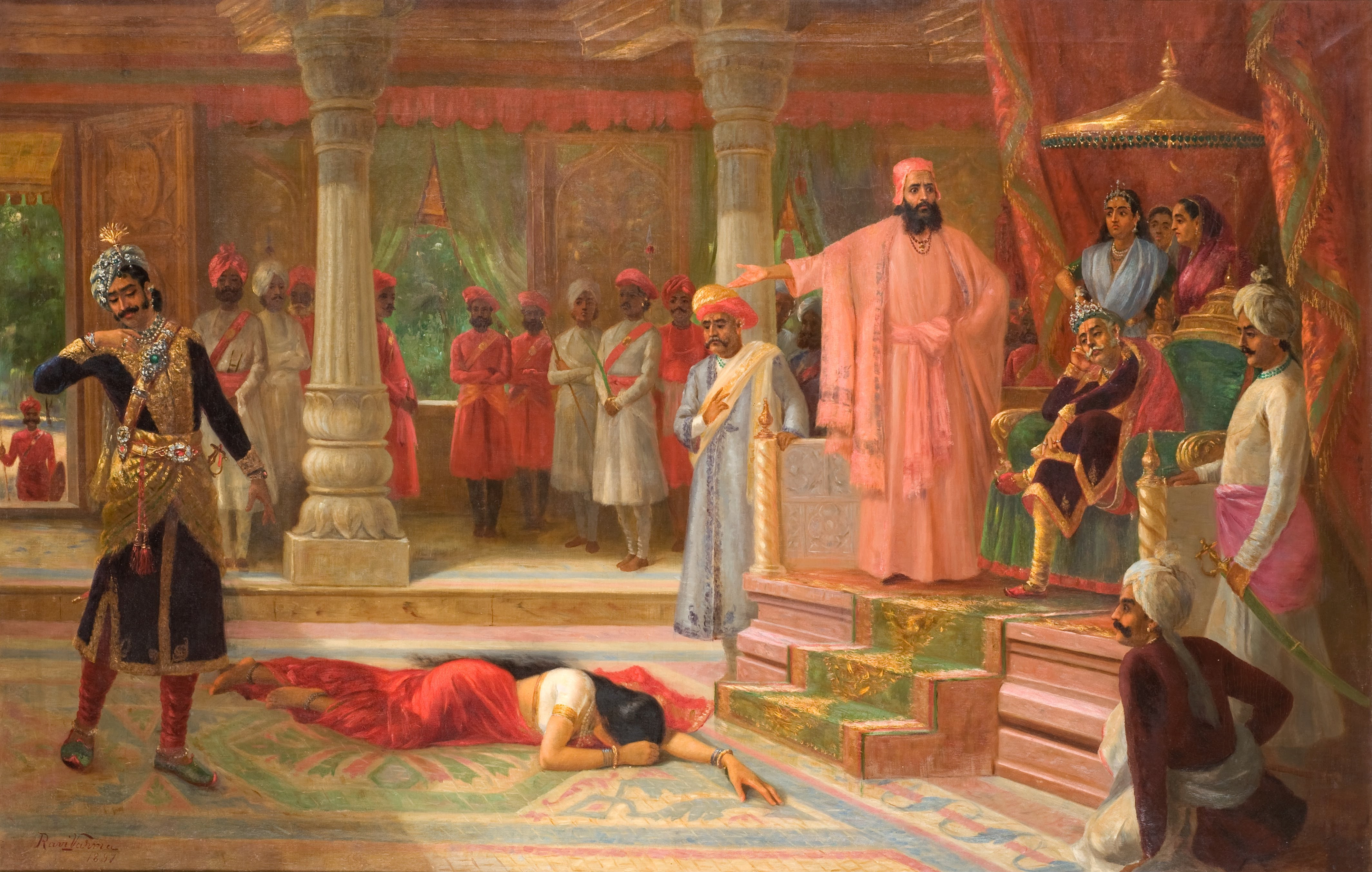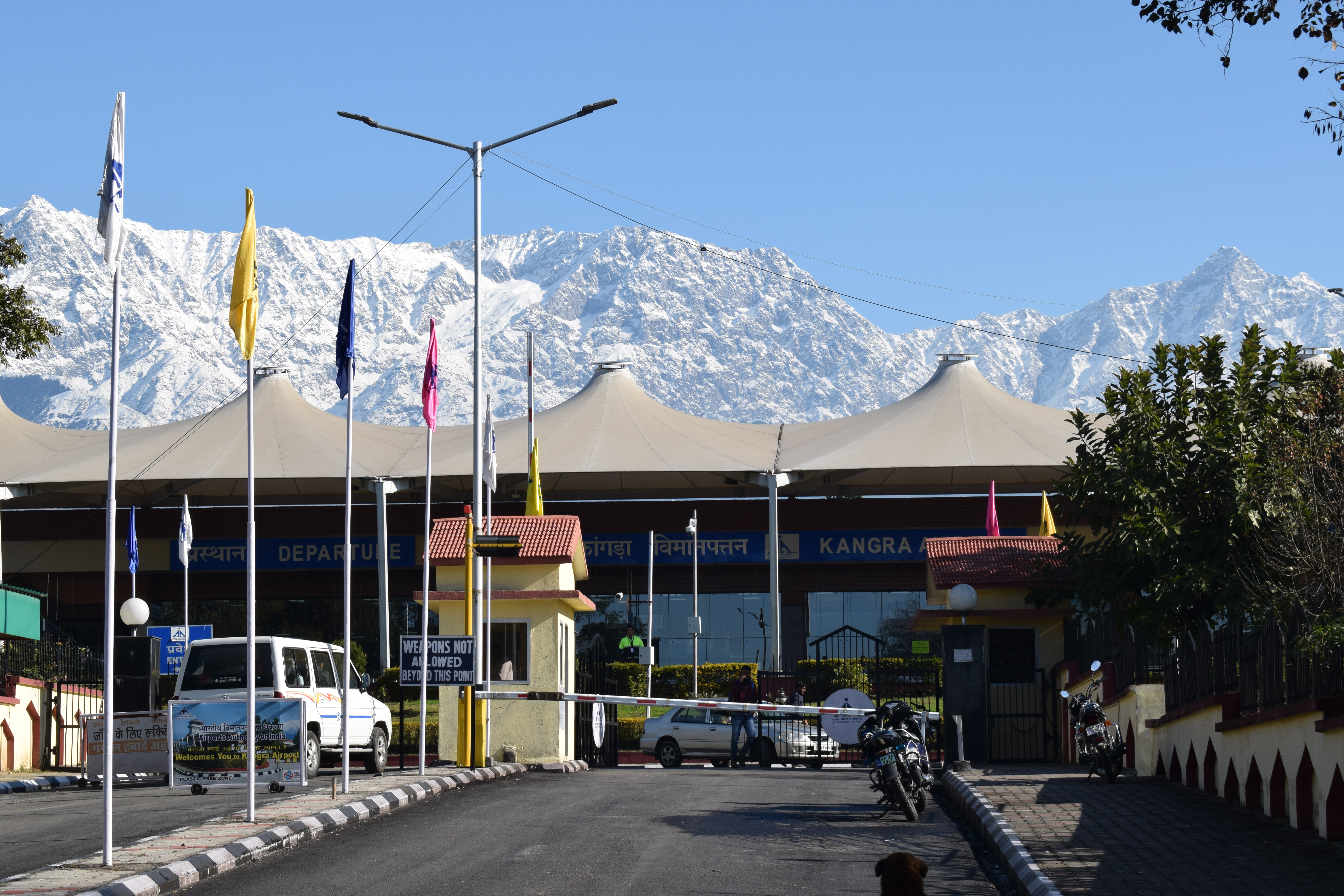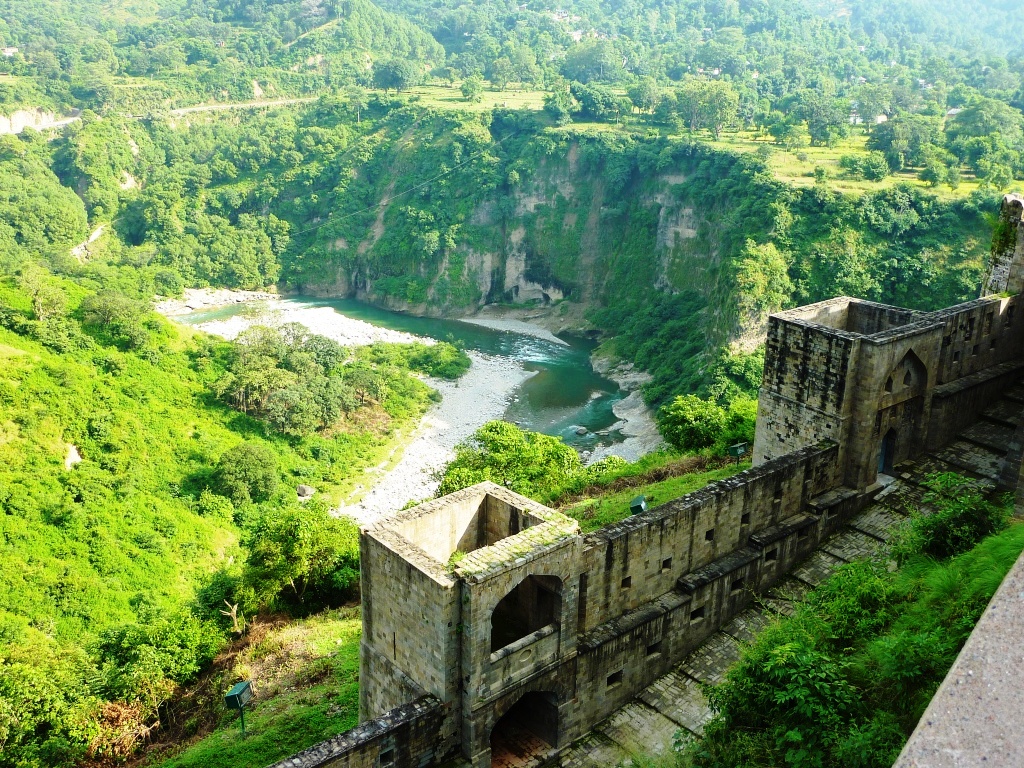|
Susharma
Susharma (Sanskrit: सुशर्मा) was the 234th Katoch king of Trigarta (present-day Kangra) and cousin brother of Bhanumati. He brutally attacked Virata, king of Matsya Kingdom because all Pandavas were living in disguise in his kingdom during their final year of exile but was defeated by Bhima. Susharma was responsible for distracting Arjun on day 13 of the Kurukshetra war. On the thirteenth day, Dronacharya formed a chakravyuha so that Yudhishthira will get trapped and killed in there. Arjuna and Krishna knew how to break it so Susharma distracted them and took them to the other side of the chakravyuha. He was killed by Arjun on the final day of the war while the rest of his army was retreating. He is mentioned in Mahabharata The ''Mahābhārata'' ( ; sa, महाभारतम्, ', ) is one of the two major Sanskrit epics of ancient India in Hinduism, the other being the '' Rāmāyaṇa''. It narrates the struggle between two groups of cousins ... [...More Info...] [...Related Items...] OR: [Wikipedia] [Google] [Baidu] |
Kurukshetra War
The Kurukshetra War ( sa, कुरुक्षेत्र युद्ध ), also called the Mahabharata War, is a war described in the ''Mahabharata ( sa, महाभारत )''. The conflict arose from a dynastic succession struggle between two groups of cousins, the Kauravas and the Pandavas, for the throne of Hastinapura. The war laid the foundation for the '' Bhagavad Gita''. The historicity of the war remains the subject of scholarly discussion. The Battle of the Ten Kings, mentioned in the ''Rigveda'', may have formed the core of the Kurukshetra war's story. The war was greatly expanded and modified in the ''Mahabharata'''s account, which makes it dubious. Attempts have been made to assign a historical date to the Kurukshetra war, with research suggesting BCE. However, popular tradition claims that the war marks the transition to the ''Kali Yuga,'' dating it to BCE. The war took place in Kurukshetra. Despite only spanning eighteen days, the war takes more th ... [...More Info...] [...Related Items...] OR: [Wikipedia] [Google] [Baidu] |
Virata
Virata ( sa, विराट, IAST ''virāṭa''), was the king of the Matsya Kingdom, in whose court the Pandavas spent a year in concealment during their exile. Virata was married to Queen Sudeshna and was the father of Prince Uttara and Princess Uttarā, who married Abhimanyu, the son of Arjuna. Abhimanyu and Uttara's son Parikshit succeeded Yudhishthira on the throne of Hastinapura, after the war of Mahabharata. He is the titular character of the Virata Parva, the fourth book of the epic Mahabharata Life Virata was a good ruler. He was the incarnation of one of Maruts and his brother Sahtanika was portion of Mitra. married his commander-in-chief Kichaka's elder sister Sudeshna. Though he was a fierce warrior, he was afraid of Kichaka's might. So he obeyed all orders of Kichaka. He was warned by Kichaka that if he wouldn't obey his orders, he (Kichaka) will destroy his whole kingdom. He was unable to stop Kichaka when he was insulting Draupadi in disguise of Sairandh ... [...More Info...] [...Related Items...] OR: [Wikipedia] [Google] [Baidu] |
Trigarta
Trigarta kingdom was an ancient kingdom in northern Indian region of the Indian subcontinent with its capital at Prasthala (modern Jalandhar), Multan and Kangra. Trigarta was founded and ruled by the vrishni Dynasty. Mention in Mahabharata Trigarta was a kingdom mentioned in the epic Mahabharata. Mahabharata mentions two different Trigarta kingdoms, one in the west close to the Sivi Kingdom and the other north to the Kuru Kingdom. Modern Kangra is one of the ancient town in North Trigarta, extending westward to the Punjab area. Multan was the capital of Trigarta with its original name that is Mulasthan. The territory of Trigarta Kingdom is around the three rivers of Satluj, Beas, and Ravi. These Trigarta kings were allies of Duryodhana and enemies of Pandavas and Viratas. Their capital was named Prasthala. They attacked the Virata Kingdom aided by the Kurus to steal cattle from there. The Pandavas living there in anonymity helped the Viratas to resist the combined forces o ... [...More Info...] [...Related Items...] OR: [Wikipedia] [Google] [Baidu] |
Arjuna
Arjuna (Sanskrit: अर्जुन, ), also known as Partha and Dhananjaya, is a character in several ancient Hindu texts, and specifically one of the major characters of the Indian epic Mahabharata. In the epic, he is the third among Pandavas, the five sons of Pandu. The family formed part of the royal line of the Kuru Kingdom. In the Mahabharata War, Arjuna was a key warrior from the Pandava side and slew many warriors including Karna and Bhisma. Before the beginning of the war, his mentor, Krishna, gave him the supreme knowledge of Bhagavad Gita to overcome his moral dilemmas. Arjuna was born when Indra, the god of rain, blessed Kunti and Pandu with a son. From childhood, Arjuna was a brilliant student and was favoured by his beloved teacher, Drona. Arjuna is depicted as a skilled archer, winning the hands of Draupadi, who married the five brothers because of Kunti's misunderstanding and Mahadeva boons. Arjuna is twice exiled, first for breaking a pact with his brothers; ... [...More Info...] [...Related Items...] OR: [Wikipedia] [Google] [Baidu] |
Kangra, Himachal Pradesh
Kangra is a city and a municipal council in Kangra district in the Indian state of Himachal Pradesh. It is also known as ''Nagarkot''. Meaning of Kangra Kangri word in Ladakh/Lahaul means snow on top of mountain. Since snow capped mountains are visible from the city of Kangra, therefore it is named Kangra (town of snow laden peaks). History Historically known as Kiraj and Trigarta,Blankinship, Khalid Y, "The End of Jihad State ", pp132 the town of Kangra was founded by Katoch Kshatriya Rajputs of Chandervanshi Lineage. The Katoch Rajas had a stronghold here, with a fort and lavish temples. Another ancient name of the city is Bhimagar and it was supposedly founded by Raja Bhim, younger brother of Kuru Emperor Yudhishthira of Indraprastha (now Delhi). The temple of Devi Vajreshwari was one of the oldest and wealthiest in northern India. It was destroyed, together with the fort and the town, by 1905 Kangra earthquake on 4 April 1905, when 1339 people died in this place ... [...More Info...] [...Related Items...] OR: [Wikipedia] [Google] [Baidu] |
Bhima
In Hindu epic Mahabharata, Bhima ( sa, भीम, ) is the second among the five Pandavas. The '' Mahabharata'' relates many events that portray the might of Bhima. Bhima was born when Vayu, the wind god, granted a son to Kunti and Pandu. After the death of Pandu and Madri, Kunti with her sons stayed in Hastinapura. From his childhood, Bhima had a rivalry with his cousins Kauravas, especially Duryodhana. Duryodhana and his uncle, Shakuni, tried to kill Bhima multiple times. One was by poisoning and throwing Bhima into a river. Bhima was rescued by Nāgas and was given a drink which made him very strong and immune to all venom. After the event of Lakshagriha, the Pandavas and their mother decided to hide from Hastinapura. During this period Bhima slew many Rakshasa including Bakasura and Hidimba. Bhima had three wives Hidimbi, the Rakshasi sister of Hidimba, Draupadi, who was married to five Pandavas because of Kunti's misunderstanding, and Valandhara, a princess of Ka ... [...More Info...] [...Related Items...] OR: [Wikipedia] [Google] [Baidu] |
Mahabharat
The ''Mahābhārata'' ( ; sa, महाभारतम्, ', ) is one of the two major Sanskrit epics of ancient India in Hinduism, the other being the '' Rāmāyaṇa''. It narrates the struggle between two groups of cousins in the Kurukshetra War and the fates of the Kaurava and the Pāṇḍava princes and their successors. It also contains philosophical and devotional material, such as a discussion of the four "goals of life" or ''puruṣārtha'' (12.161). Among the principal works and stories in the ''Mahābhārata'' are the ''Bhagavad Gita'', the story of Damayanti, the story of Shakuntala, the story of Pururava and Urvashi, the story of Savitri and Satyavan, the story of Kacha and Devayani, the story of Rishyasringa and an abbreviated version of the '' Rāmāyaṇa'', often considered as works in their own right. Traditionally, the authorship of the ''Mahābhārata'' is attributed to Vyāsa. There have been many attempts to unravel its historical growth and c ... [...More Info...] [...Related Items...] OR: [Wikipedia] [Google] [Baidu] |
Madhu Gujrati , Susarma Looses Suparna Weapon
Madhu (Sanskrit: ) is a word used in several Indo-Aryan languages meaning ''honey'' or ''sweet''. It is ultimately derived from Proto-Indo-European ''*médʰu'', whence English '' mead''. Metaphorical use ''Madhu'' has been used for millennia since the Rigveda (1400–1000 BCE) Jamison and Brereton (2014) The Rigveda, Oxford University Press, p 5 in a similar metaphorical sense as ''wine'' is in English, e.g. "the wine of truth", and employed in that manner in Hindu religious literature. For example, the ''Brihadaranyaka Upanishad'', believed to have been composed in the first millennium BCE, contains a chapter called the ''Madhu Brahmana'', and "the secret essence of the Vedas themselves, was called the ''Madhu-vidya'' or 'honey doctrine'". Various opinions There are different opinions surrounding the word ''Madhu''. Some scholars date metaphorical usage of ''madhu'' to a time very close to the initial composition of the Vedas. Soma, the shared sacred drink of the Indo-Iranians ... [...More Info...] [...Related Items...] OR: [Wikipedia] [Google] [Baidu] |
Sanskrit
Sanskrit (; attributively , ; nominally , , ) is a classical language belonging to the Indo-Aryan branch of the Indo-European languages. It arose in South Asia after its predecessor languages had diffused there from the northwest in the late Bronze Age. Sanskrit is the sacred language of Hinduism, the language of classical Hindu philosophy, and of historical texts of Buddhism and Jainism. It was a link language in ancient and medieval South Asia, and upon transmission of Hindu and Buddhist culture to Southeast Asia, East Asia and Central Asia in the early medieval era, it became a language of religion and high culture, and of the political elites in some of these regions. As a result, Sanskrit had a lasting impact on the languages of South Asia, Southeast Asia and East Asia, especially in their formal and learned vocabularies. Sanskrit generally connotes several Old Indo-Aryan language varieties. The most archaic of these is the Vedic Sanskrit found in the Rig Veda, a colle ... [...More Info...] [...Related Items...] OR: [Wikipedia] [Google] [Baidu] |
Katoch
Katoch is a Chandravanshi Rajput clan. Their traditional area of residence was in the Trigarta Kingdom, based at Jalandhar and at Kangra Fort in the Indian state of Himachal Pradesh. They descent from the Trigarta dynasty mentioned in the Mahabharata. Famous subclans came into existence from Katoch Rajputs are Dadwal Dynasty, Guleria Dynasty, Sibaia Dynasty, Chib Dynasty, Jaswal Dynasty. Etymology There are two possible origins for the word ''Katoch''. Members of the clan say it comes from the words ''Kat'' (army) and ''uch'' (upper class) but other sources say that it comes from ''kot'' (fort). The Kangra fort was known as Nagarkot or Kot Kangra, and since the administrators/rulers resided within that particular ''kot'' they were vernacularly called "Kot'ch" or कोटच, which means ''those within the fort''. This over time became Katoch. History The main branch of the Katoch clan were the rulers of the Kangra State, which was, by some accounts, the most prominent kingd ... [...More Info...] [...Related Items...] OR: [Wikipedia] [Google] [Baidu] |
Matsya Kingdom
Matsya ( sa, मत्स्य) was a Vedic kingdom and later became a part of sixteen Mahajanapadas, which also appears in Hindu Epic literature. The capital of Matsya was at Viratanagari (present-day Bairat, in Rajasthan) which is said to have been named after its founder king, Virata. Mention in Mahabharata Matsya kingdom was founded by king Matsya who was the twin brother of Satyavati and who was contemporary to Bhishma. The ''Mahabharata'' (V.74.16) refers to a King Sahaja, who ruled over both the Chedis and the Matsyas, which implies that Matsya once formed a part of the Chedi Kingdom Chedi ( sa, चेदी) was a kingdom which fell roughly in the Bundelkhand division of Madhya Pradesh regions to the south of river Yamuna along the river Ken. Its capital city was called Suktimati in Sanskrit. According to the Mahabha .... References Kingdoms in the Mahabharata {{Hindu-myth-stub ... [...More Info...] [...Related Items...] OR: [Wikipedia] [Google] [Baidu] |
Krishna
Krishna (; sa, कृष्ण ) is a major deity in Hinduism. He is worshipped as the eighth avatar of Vishnu and also as the Supreme god in his own right. He is the god of protection, compassion, tenderness, and love; and is one of the most popular and widely revered among Indian divinities. Krishna's birthday is celebrated every year by Hindus on Krishna Janmashtami according to the lunisolar Hindu calendar, which falls in late August or early September of the Gregorian calendar. The anecdotes and narratives of Krishna's life are generally titled as ''Krishna Leela''. He is a central character in the ''Mahabharata'', the '' Bhagavata Purana'', the ''Brahma Vaivarta Purana,'' and the '' Bhagavad Gita'', and is mentioned in many Hindu philosophical, theological, and mythological texts. They portray him in various perspectives: as a god-child, a prankster, a model lover, a divine hero, and the universal supreme being. Quote: "Krsna's various appearances as a di ... [...More Info...] [...Related Items...] OR: [Wikipedia] [Google] [Baidu] |

.png)








